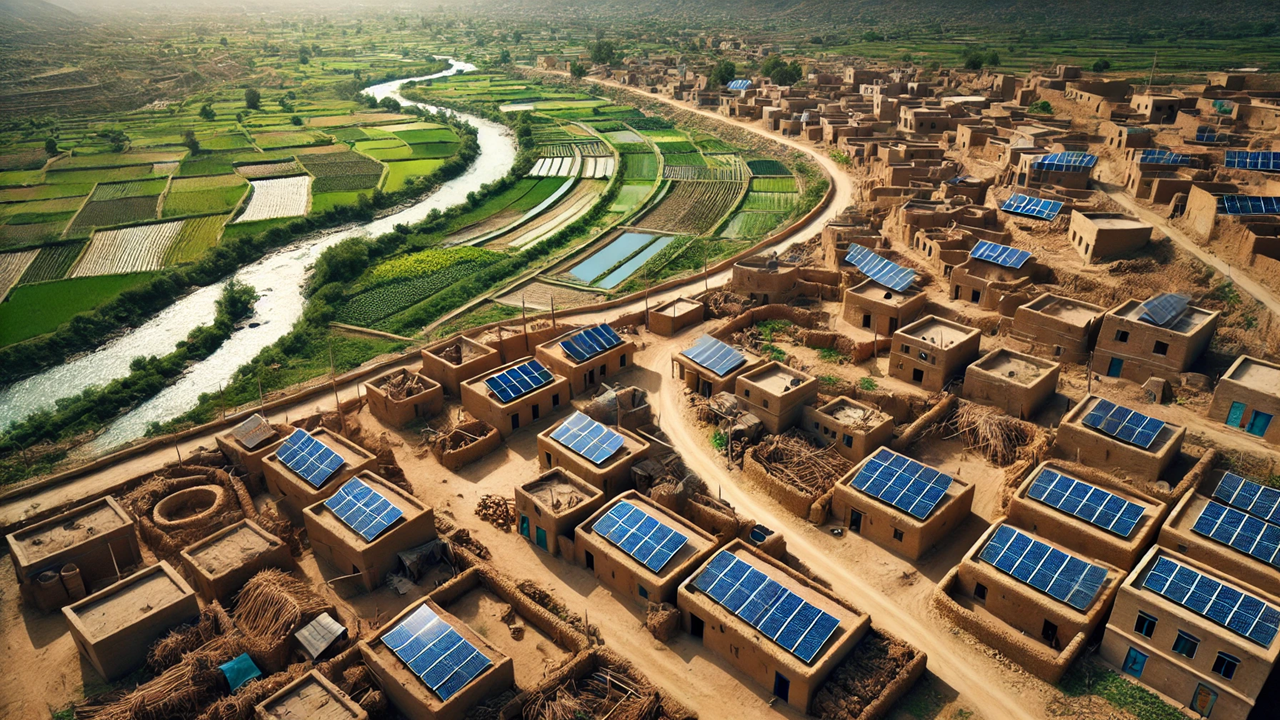Powering Pakistan: A Path to Universal Energy Access
The World Bank's "Insights into the True energy access situation in Pakistan based on the Multi-Tier Framework" reveals significant progress in electricity access across Pakistan but highlights persistent issues with affordability, reliability, and clean cooking solutions. The survey underscores the need for targeted policy interventions to achieve universal energy access by 2030.

A new report by the World Bank titled "Insights into the true energy access situation in Pakistan based on the Multi-Tier Framework" sheds light on the country’s energy landscape, revealing significant strides in electricity access while highlighting persistent challenges in affordability, reliability, and clean cooking solutions. Conducted between 2021 and 2022, this comprehensive survey offers crucial insights into energy access for households, public institutions, and microenterprises across Pakistan.
Electricity Access: Progress and Pitfalls
Pakistan has made commendable progress toward universal electricity access, with 97.6 percent of the population now connected to one or more sources of electricity. The national grid serves as the primary source, with 89.2 percent of households connected, while 8.5 percent rely on off-grid technologies such as solar home systems. However, 2.4 percent of the population still lacks access to any form of electricity.
Urban and rural areas boast high access rates, with urban areas slightly ahead at 98.1 percent compared to 97.4 percent in rural regions. Yet, disparities remain evident at the provincial level. Punjab and Khyber Pakhtunkhwa show high grid electricity access rates at 97.6 percent and 81.4 percent, respectively, while Sindh and Balochistan lag with 77.6 percent and 54.7 percent access to grid electricity. These provinces also see significant reliance on off-grid solutions.
Despite widespread grid coverage, nearly 80 percent of households fall into Tier 2 or lower in the Multi-Tier Framework (MTF) assessment, indicating issues with affordability, capacity, and availability. Only three percent of households achieve Tier 4 or higher, underscoring the need for substantial improvements in electricity quality and reliability.
Informal Connections and Loadshedding Woes
A striking finding from the survey is the prevalence of informal connections to the national grid. Approximately 9.6 percent of households access electricity without formal arrangements, contributing to high commercial losses for distribution companies. Sindh reports the highest rate of informal connections at 33.2 percent, with rural areas outside Karachi being particularly affected.
Loadshedding remains a pervasive issue, especially in areas with high rates of informal connections. These regions experience up to 17 hours of load-shedding daily, compared to six hours in areas with more formal connections. The report highlights the dual challenges of high electricity bills and frequent voltage issues for formally connected households, while those with informal connections primarily grapple with unscheduled outages and poor electricity quality.
Institutional and Enterprise Energy Access
The survey reveals that health facilities and microenterprises in Pakistan generally enjoy high rates of electricity access. Nationwide, 96.3 percent of health facilities are connected to the grid, though many struggle with availability and capacity issues, particularly in rural areas. Education facilities, on the other hand, show lower access rates, with significant disparities between urban (93.1 percent) and rural (73.6 percent) areas. The report indicates that a substantial number of schools in rural regions fall into Tier 0, reflecting severe availability problems.
Pakistani enterprises demonstrate strong grid dependence, with 98 percent of the manufacturing sector and over 90 percent of agro-processing and services sectors having access to electricity. Despite this, reliability and quality issues persist, impacting operational efficiency.
Policy Recommendations: Towards Universal Energy Access
To achieve universal electricity access by 2030, the report outlines several key policy recommendations. First, improving the quality and reliability of electricity supply is crucial. This includes upgrading the distribution network, metering, and billing systems to reduce technical and commercial losses, and encouraging private sector participation in modernizing and operating the distribution network. Second, addressing affordability issues is essential. Implementing the Indicative Generation Capacity Expansion Plan (IGCEP) to increase the share of renewable energy will help lower generation costs. Additionally, introducing prepaid meters can help consumers manage electricity expenditure more effectively, and promoting energy-efficient appliances through awareness campaigns and financial incentives can make a significant difference.
Formalizing informal connections is another critical step. Providing financial incentives to households for formalizing connections, such as reduced connection fees or installment payment options, and fostering community cooperation to report illegal connections and encourage formalization can help address this issue. Finally, expanding access in Balochistan and Sindh is necessary. Utilizing a combination of grid extension, mini-grids, and solar home systems to electrify remote areas based on a geospatial least-cost electrification plan can ensure these regions are not left behind.
Clean Cooking: A Critical Challenge
While electricity access has seen notable improvements, clean cooking remains a significant challenge. Nationally, only 44.3 percent of households use clean fuel stoves, with a stark contrast between urban (80 percent) and rural (21.3 percent) areas. Traditional stoves and firewood dominate rural cooking practices, posing health and environmental risks.
Provincial disparities are evident, with Sindh showing better access to clean stoves compared to Khyber Pakhtunkhwa and Balochistan. The report emphasizes the need for targeted interventions to promote clean cooking solutions, particularly in underserved rural areas.
The "Insights into the true energy access situation in Pakistan based on the Multi-Tier Framework" provides a comprehensive overview of the country's energy access landscape, highlighting significant achievements and ongoing challenges. With targeted policy interventions, Pakistan can overcome these hurdles, ensuring universal access to affordable, reliable, and modern energy services by 2030.
- FIRST PUBLISHED IN:
- Devdiscourse
ALSO READ
World Bank Approves $110M Loan to Strengthen Fiscal Sustainability and Natural Resource Management in Sergipe, Brazil
World Bank Projects Viet Nam's Economic Growth to Rebound in 2024, Urges Capital Market Development
World Bank's Boost for Delhi's Urban Transit Future: A New Collaboration with NCRTC
World Bank Launches $415M Education Program to Support Students in Ukraine
World Bank Releases Policy Notes to Guide Mongolia’s Sustainable Development and Economic Diversification










